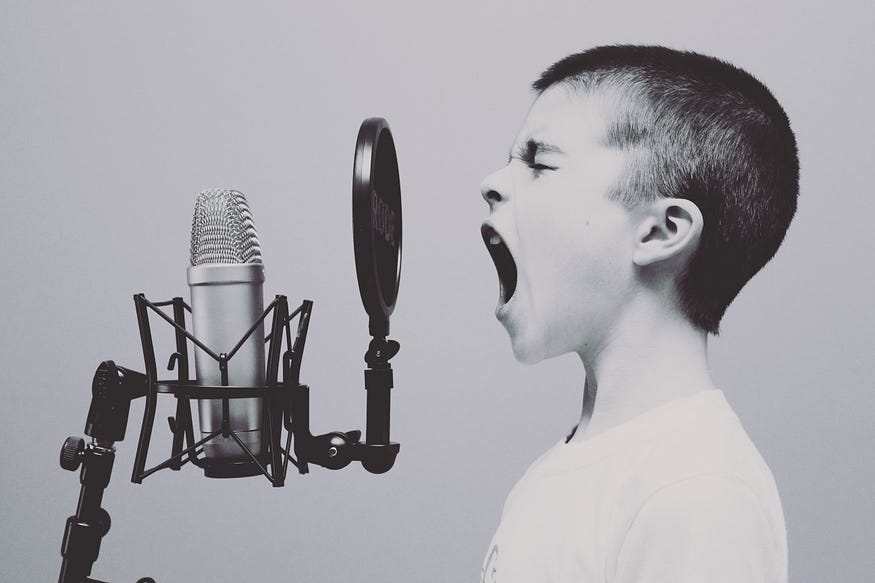Sonic Writing: Do Your Words Sing Sweet Music or Hit The Wrong Note?
Rhythm and flow are crucial for building your sound appeal in English
When we read, we speak, even if it’s just in our heads. Words and sounds are intertwined, and over the years, each language has built a bank of practices and techniques which amplify the meaning of text.
As writers, it’s important that we consider how our words sound to readers. This is true whether you are writing punchy ad copy, informative articles, or epic fantasy novels.
“When I’m writing, I’m more conscious of the sound, actually, than the meaning. I know what the rhythm of the sentence is going to be before I know what the words are going to be in it.” Philip Pullman
Quite simply, if the rhythm and flow of your text are right, readers keep going. But there’s more to it than that. Learning to employ sonic writing techniques at the optimal time can create magic — drawing attention, creating a motif, or building patterns of meaning.
Some writers listen to music while they work; others need absolute silence. But all of us must consider sound as we put one word after another. If we don’t, our writing appears flat and lifeless.
Syllable Count

Rat-a-tat-tat-tat-rat-a-tat-tat.
Nobody wants to read that!
Writers should learn to avoid machine gun sentences.
When editing, consider the number of syllables in your words. Avoiding long, academic-sounding words can be a benefit, but watch out for too many single-syllable words in a row. Professionals in the world of content and copywriting often fall into this trap as they seek to make writing simpler, shorter and more readable.
Have a look at this example:
❌ This text tries to show you how to make your words flow and sing as if they had gone to a gig and were live on stage.
✅ One does not simply provide rhythm and music with rapid-fire, staccato notes, but rather by constructing a glorious melody of short, medium and exceptionally long words.
Takeaway point: vary the length of the words in your sentences.
Rhythm and Metre

English is famously a stress-timed language. When we speak, we can arrange sounds and amend the speed of our reading to include regular stresses. However, in writing, we can think more carefully about the most pleasing order of sounds.
Poets often use ‘iambic metre’, pairs of syllables which are ‘unstressed-stressed’ (oO).
E.g. I wandered lonely as a cloud (oOoOoOoO)
That floats on high o’er vales and hills (oOoOoOoO)
This is one example of a rhythm that sounds especially musical and pleasing in English. Make use of it in your writing.
Imagine if Wordsworth wrote this:
I was quite lonely, like a cloud in the sky — OoOOoOoOooO
That floats high above the hills and the fields in between — oOOoOoOooOooO
Of course, using an even rhythm throughout a piece of writing will seem strange to the reader. It’s best to keep stress patterns varied and draw attention to particular points through the use of rhythm. One way to do this is to use next-door sentences with the same rhythmic pattern. Occasionally, you may need to add short words which are not essential to the meaning of the sentence, but sometimes, the beauty of rhythm trumps concision.
One useful technique is to create an even rhythm of stressed and unstressed syllables to allow longer sentences to flow and carry the reader forwards. This can contrast with shorter, more impactful statements or more intense sections with tightly-packed stress patterns.
Takeaway point: Read writing aloud to catch any awkward rhythms and consider choosing cadences to match the intention of your paragraph.
Tempo

Speed. Readers love it.
However, they also enjoy slower, more thoughtful passages, which allow them to ponder the meaning of what the writer has chosen to leave on the page.
One way to match the tempo of your writing to reading intention is to use ‘bell curve’ paragraphs.
This means using shorter sentences at the beginning and end of paragraphs, and longer sentences in the middle. This not only provides variety for the reader, but makes the paragraph topic abundantly clear. It’s best to add heavier details in the middle before concluding with impact.
Here’s an example.
❌ This report will outline the findings from our author questionnaire. The survey was sent to our top-earning international clients. This includes writers from Europe, Asia, the Middle East and Africa. The findings have been broken down into four sections. There are recommendations included for next year’s author-relation policies.
✅ Recently, we sent a questionnaire to all contracted authors. The aim of this annual report is to gauge the satisfaction of our top-earning international clients and to use the findings to inform future policies. The data has been broken into five sections and includes recommendations on possible changes to client management. The findings are below.
And don’t forget about the other major speed control for your writing — punctuation.
By adding more punctuation, you slow the reading speed, and by constructing sentences with less, you leave the reader free and clear to shoot forwards.
Consider that each punctuation mark affects reading speed in a different way.
“If a period is a stop sign, then what kind of traffic flow is created by other marks? The comma is a speed bump; the semicolon is what a driver education teacher calls a “ rolling stop ”; the parenthetical expression is a detour; the colon is a flashing yellow light that announces something important up ahead; the dash is a tree branch in the road.” Roy Peter Clark, Writing Tools
Takeaway point: plan your sentence lengths and punctuation to make sure the reader follows your text at the speed you want.
Sonic Techniques

Crash, bang, wallop!
Including sensory information is one of the easiest ways to transform flat text into an engaging read. Yet too often, writers focus on the visual. Allowing the listener to ‘hear’ the words on the page makes writing come alive.
I’m talking about onomatopoeia.
Hiss, squelch, pop, rustle. These words were invented to mimic the sound they describe.
When using words like these, consider pairing them with something unexpected.
The hiss of a broken television
The squelch of week-old birthday cake
The rustle of bums on seats
‘Sonic words’ often include plosives—consonant sounds made by completely blocking the flow of air as it leaves the body, normally followed by releasing the air.
‘b’: percussive, slightly harsh (bash, bang)
‘d’: a thicker, flatter sound (thud, drip)
‘g’: harder, guttural (gong, go!)
‘k’: impact, collision (crash, clang)
‘p’: softer, air-based (puff, patter)
‘t’: a lighter, sharper sound (tick, titter)
One way to employ this sonic writing technique is to use consonance (similar-sounding consonants in close proximity) or alliteration to create a sense of insistence. Repetition within a paragraph speeds the tempo — like a repeated note in a piece of music.
Alternatively, use dissonance (contrasting sound palettes) to reflect contrasts in the narrative, to disrupt the flow, or to enhance the emotional depth of a particular moment.
This technique can even liven up business emails and add urgency to sales copy. Check the example below:
❌ The fair will happen next month in the main hall. Which stand would you like to have?
✅ The Berlin Book fair takes place next month. There are several packages on offer. Which one works best for you?
Of course, I would warn against stuffing your text with these sound techniques. The reader should never become aware of the little tricks you’re using to keep them hooked.
Takeaway point: before using these techniques, identify key areas of the text where you need to draw the reader’s attention (e.g. the headline).
Tripwire Sounds

Just as the sound of our words can boost effectiveness, it can also hit a bum note with readers. These are the instances where readers ‘trip over’ phrases which are tricky to pronounce or include unintended repetition of sound.
Check your texts for these ‘tripwire sounds’.
Neighbouring sounds — ones which are similar, but could not count as alliteration. These are often found in tongue twisters:
e.g. How can a clam cram in a clean cream can?
Was that easy to read?
2. Unintended alliteration or consonance
Unless you want to draw attention to the deeper meaning of the sentence, sound techniques become a distraction.
❌ There are multiple methods for maintaining military records.
✅ Military records are maintained in a variety of ways.
3. Repeated word endings
Watch out for consecutive words which use the most common English suffixes (-tion, -ity, -er, -ness, -ism, -ment, -ant, -ship, -age, -ery).
❌ Applying for training funding can lead to frustration and exhaustion.
✅ Convincing your boss to increase the CPD budget is never easy.
Remember, opposites attract. Avoid awkward pairings.
Takeaway point: check your texts carefully for unintentional sound techniques and awkward pairings.
Philip Charter is a totally-human ghostwriter and author who runs the Multilingual Writers’ Community. He likes crisps.






That was music to my ears! :) Nothing is worse than seeing an editor (such as Grammarly) kill the carefully crafted melody and rhythm of the text by "fixing errors" – such elements that were actually intended, that were there to bring life to the text.